Glassblowers Sculpt Masterpiece from Scout’s Sketch
Webelos Scout Ryan Murray sketched his ideas for glass art to be made at The Corning Museum of Glass. At a glassblowing event, artists were going to create items based on ideas the visiting Scouts submitted.
“I wanted something that represented Scouts, and then I thought of Eagle Scout,” Ryan says.
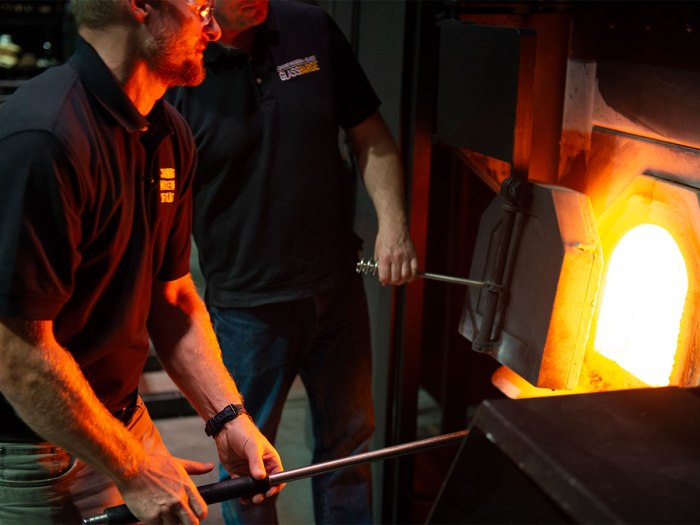
And who better to make an eagle-themed work of art than two Eagle Scout glassblowers? With Ryan’s drawing in hand, Eric Meek and G Brian Juk fired up the furnaces at the upstate New York museum and got to work.
Adding chemical elements gives glass its color. Mix in iron for green glass, copper for light blue, manganese for purple, cobalt for dark blue and gold for deep red.
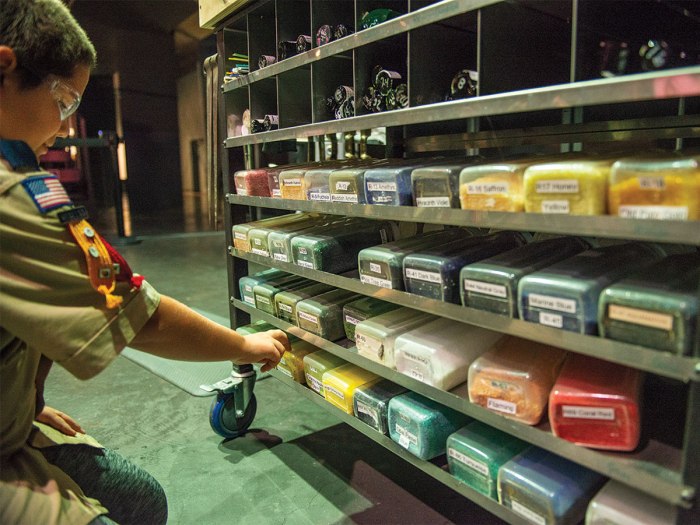
Combine silica sand, soda ash and limestone; heat it to 2,100 degrees in a furnace; and you’ve got molten glass. Juk uses a 4-foot stainless steel blowpipe to gather the glass.
Shears, tweezers, crimps, wooden blocks — glassblowers have many tools to shape the glass, but they have to be quick when using them.
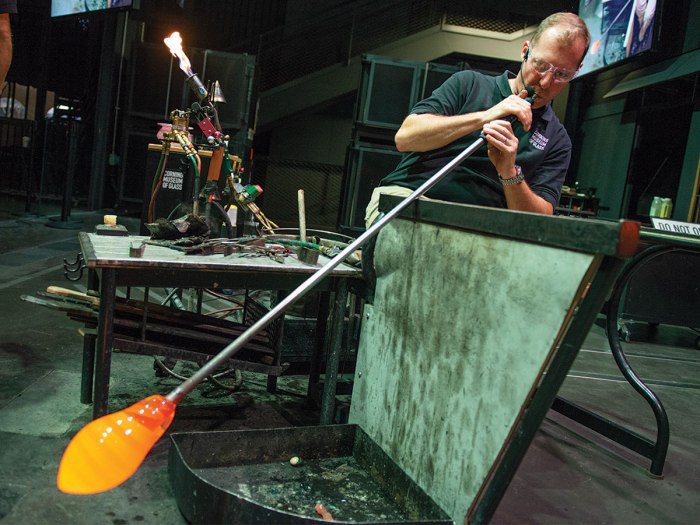
“As soon as you gather the glass from the furnace, it cools down immediately. You have a very limited window to work on the glass,” Juk says. “At 1,000 degrees, we consider that ‘cold,’ because it gets hard like a window pane.”
Glassblowers cut off excess glass while it’s still glowing hot and pliable.
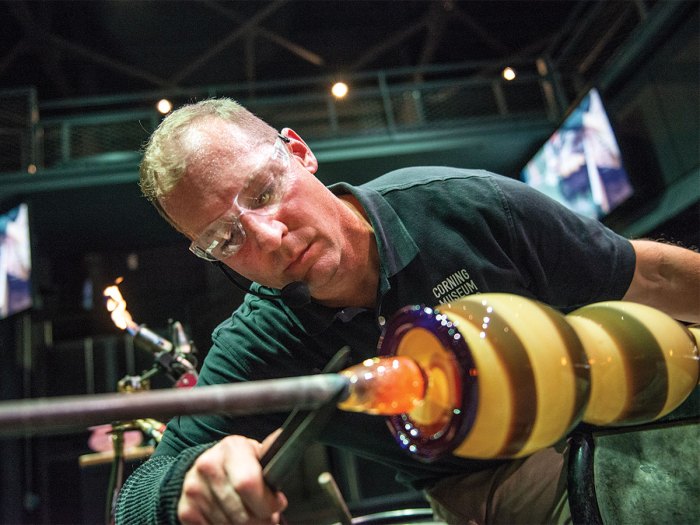
“Every moment you’re shaping it, it changes,” Meek says. “It changes from something soft and drippy, like honey, to something that’s solid and brittle. It’s a challenging material to make new things out of.”
For experienced glassblowers, some glassblowing projects can be completed in 15 minutes. Others take hours, depending on how complex the design is.
A folded wet newspaper is a basic glassblowing tool. As long as it’s wet, it won’t catch fire; it will just steam. The newspaper provides a layer of protection for the glassblower as he molds the glass by cupping his hand around it and spinning the blowpipe.
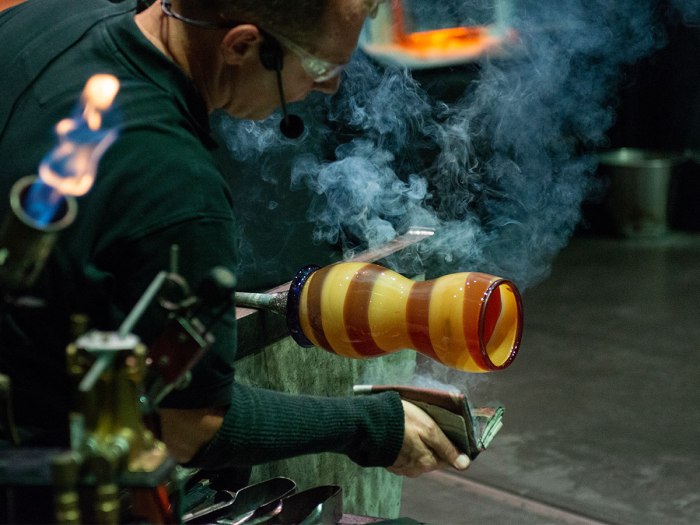
If the glass gets too hard, take it back to the furnace and reheat it.
Juk and Meek love making glass for a living. It’s not an easy career, but it’s rewarding because of the creative possibilities.
“If you’re passionate about something and your heart is really into it, you have to follow that where it leads you,” Juk says. “It’s not the easiest to become an artist, but you have to follow your dreams. You have to take risks.”
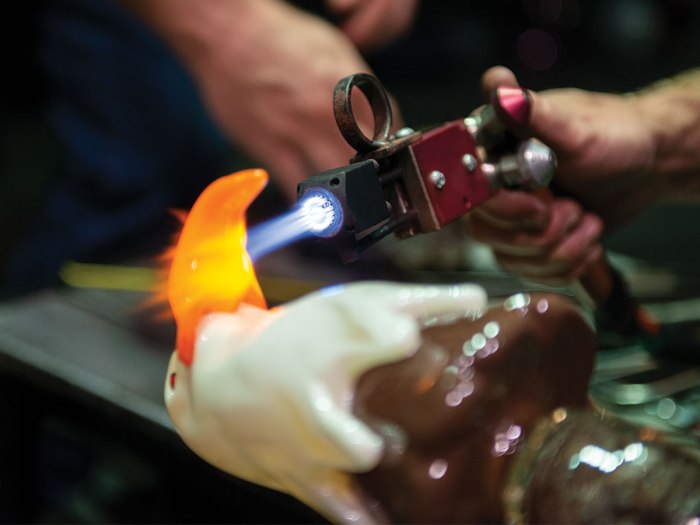
Ryan and Juk show off the drawing and the final product. The eagle head needed to cool overnight before Ryan could take it home. He knew exactly where it should go: the corner of the desk in his room.
“That’d be a perfect place for me to see it and remember,” he says.
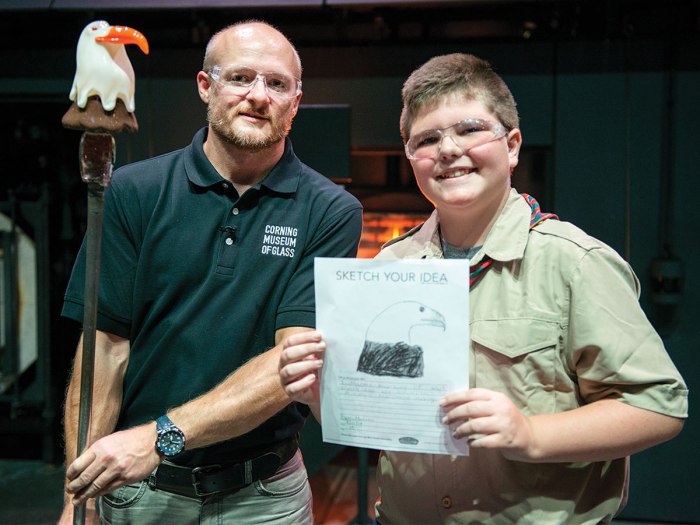
COOL FACTS ABOUT GLASS
• The Corning Museum of Glass has Egyptian glass artifacts dated around 1400 B.C.; however, researchers believe some of the first glass was made several hundred years before that in Mesopotamia.
• Natural glass can be created by lightning strikes, volcanoes and meteorite impacts. Some sea sponges have skeletons made of silica, a type of glass.
• Many smartphone screens are made of chemically strengthened glass called Gorilla Glass, which was made using salt baths. Some car manufacturers use this tough glass for windshields.
• Pyrex, a popular cookware, was invented more than 100 years ago after Bessie Littleton, wife of a Corning Glass Works scientist, baked a sponge cake using a heat-resistant glass the company had developed for railway lanterns. The cake was evenly baked, easy to remove and baked faster than in other ceramic dishes.
Find out more about the Corning Museum of Glass at cmog.org.
That’s really cool and I like that the glass blowers are Eagle Scouts.